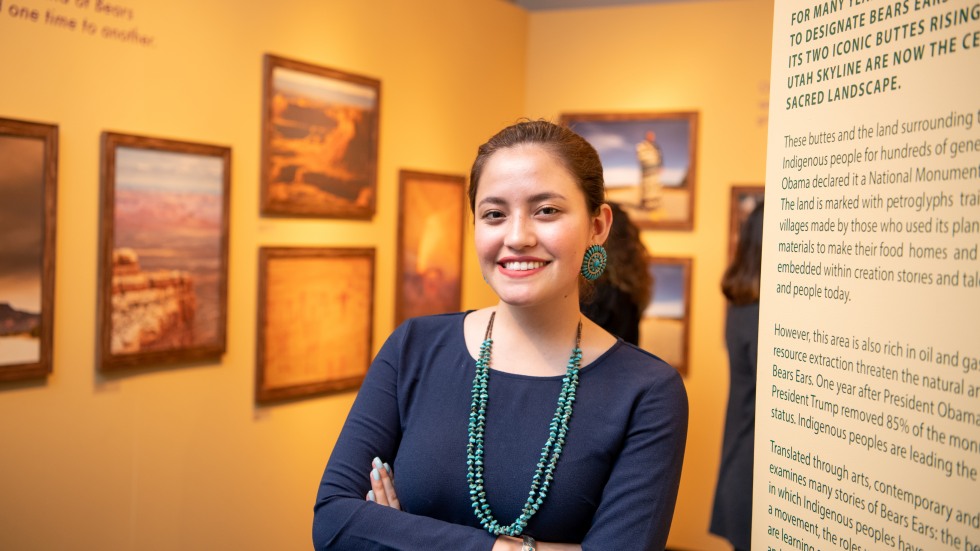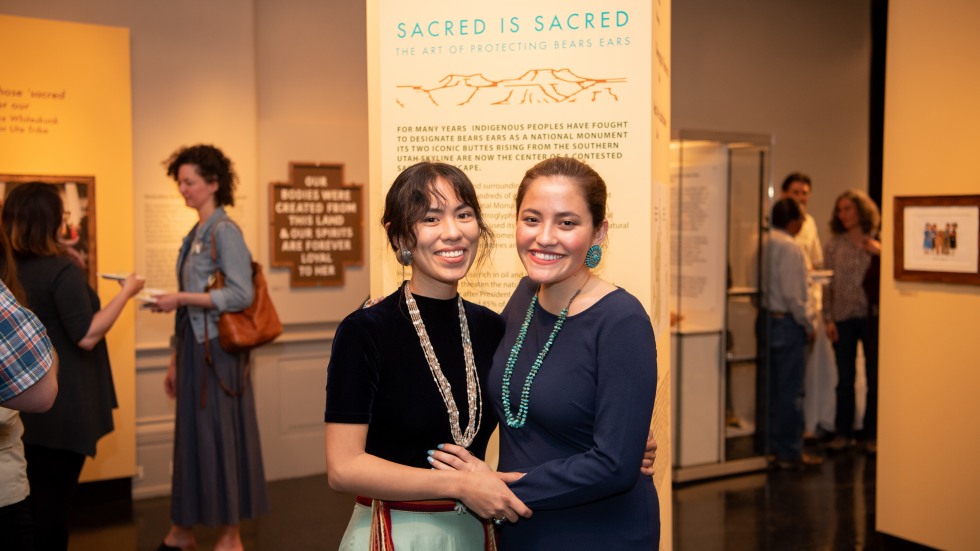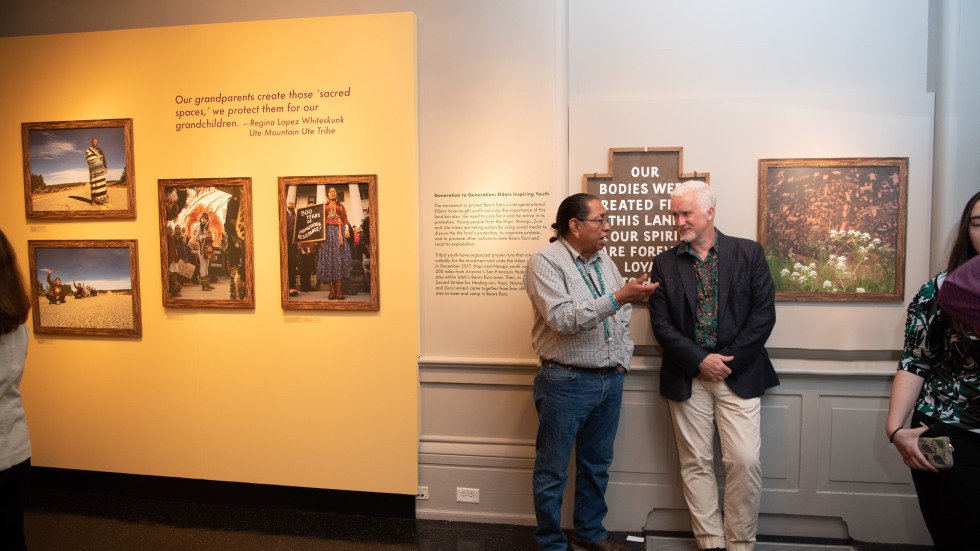For many years, Indigenous peoples have fought to designate Bears Ears as a national monument. Its two iconic buttes rising from the southern Utah skyline are now the center of a contested sacred landscape.
These buttes and the land surrounding them were homes to Indigenous people who used its natural features for hundreds of generations before President Obama declared it a national monument in December 2016. The land is marked with petroglyphs made by those who used its plants, animals and other natural materials to make their food, homes, and culture. The area is embedded within creation stories and tales known to ancestors and people today.
However, this area is also rich in oil and gas. Renewed calls for resource extraction threaten the natural and cultural landscape of Bears Ears. One year after President Obama’s monument dedication, President Trump removed 85% of the monument from protected status. Indigenous peoples are leading the fight for its protection.
Translated through arts, contemporary and past, this exhibition examines many stories of Bears Ears: the beauty of the land, the ways in which Indigenous peoples have come together to start a movement, the roles women and youth play in it, and how people are learning and healing through their fight to protect Bears Ears and preserve its sacrality. Through the voices and works in this exhibit, you will see and explore why protecting Bears Ears and the movement is important to Indigenous peoples and why it should be important to you.
Opened May 11, 2018 - Closed December 6, 2019
Curated by Isabella S. Robbins, Master’s Candidate in Public Humanities. This exhibition has been made possible by generous support in the form of a Rudolph F. Haffenreffer 3rd Fellowship, as well as contributions from the people leading the charge, and contemporary Indigenous artists and allies. The Museum is extremely grateful to Torrey House Press, Publishers of “Of Morning Light: Native Voices Speak for the Bears Ears,” edited by Jacqueline Keeler, for allowing us to use a quote from the book by Wayland Gray as the title of this exhibition - “Sacred is Sacred”.



